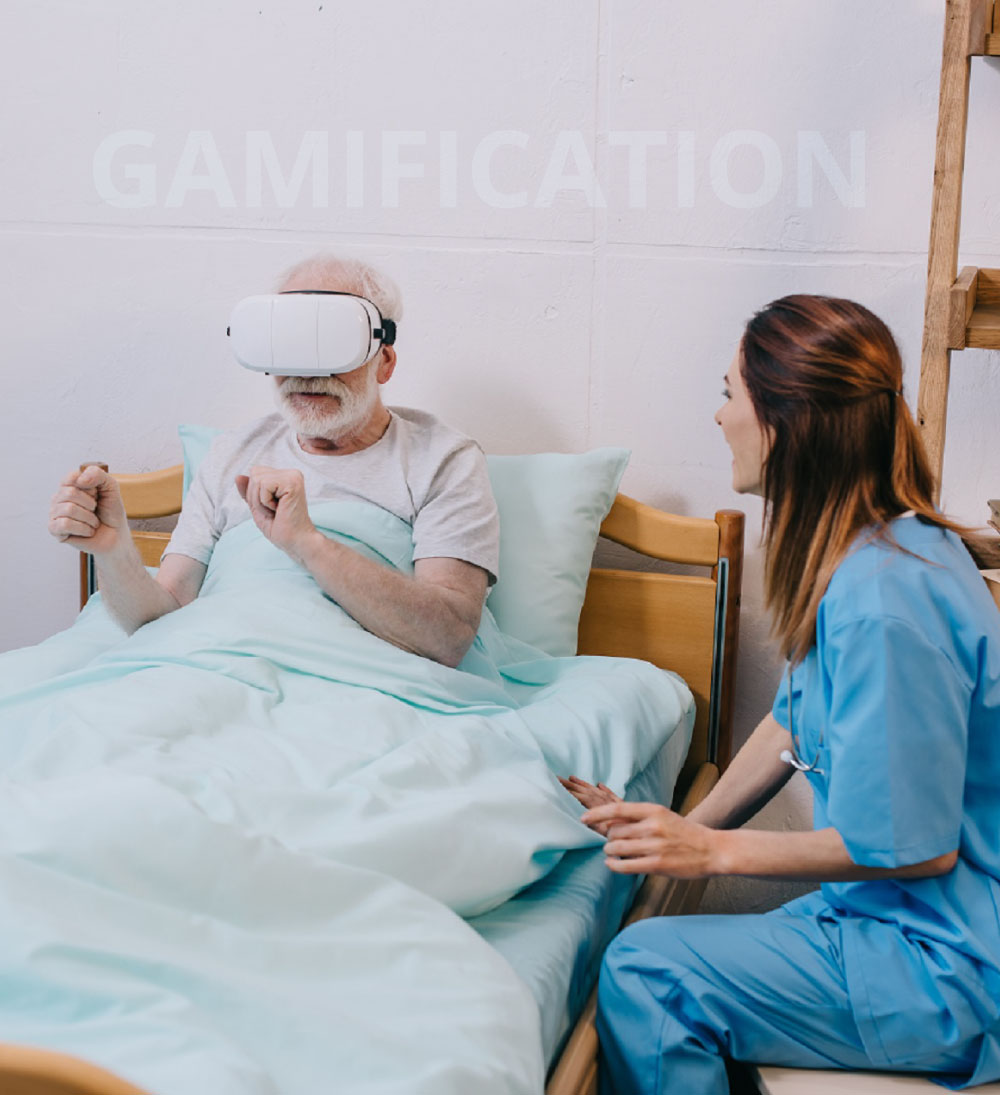Gamification
in Healthcare
A game where everybody
wins- Gamification in healthcare

Blog
A game where everybody
wins- Gamification in healthcare

From a simple interactive gaming app to integration of next-gen gaming solutions to your care coordination solution, your gamification plan needs to be architected to meet the varying stakeholder needs and transform user experiences.
In the world of consumerism, healthcare gamification strategies are increasingly gaining significance among patients by engaging them, improving Patient Experiences (PX), while seamlessly integrating gaming techniques to streamline care plans and accelerate health outcomes.
The global gamification market was valued at $2.17 billion in 2017 and is prognosticated to reach a whopping $15 billion by the end of 2021 and $19.4 billion by 2023. The healthcare gamification market share was at $16 billion in 2016, with an expected forecast of 12% CAGR from 2017 to 2024 according to the Global Market Insights report. The global market for wearable medical devices was at $4.5 billion in 2020.
Gamification creates positive behavioral changes in patients while improving health outcomes. A Gartner study shows that people using wearable and IoT technologies for health tracking will have changed their lifestyle, and these are projected to lengthen their lifespan by an average of six months.
User adoption and retention are amongst the key components that drive the success of a patient engagement platform. Even the greatest product could be a failure with no user adoption. However, in a highly competitive mobile application landscape, consumers are spoilt for choice with a massive pool of tools and applications that are designed to simplify their engagement experiences with a product or service. The major downside to this is that users are also overwhelmed with choices that it requires unique value propositions and truly engaging experiences to make them stick to a brand or an application.
Consider the fact that user adoption of a fitness mobile application drops from 20.2% on day 1 to just 4% on day 30, which again reduces further. Research also indicates that a meager 2% of healthcare consumers actually engage with their patient engagement applications. Gamification is a great way to foster patient engagement, provide personalized recommendations, and help them proactively participate in their care journeys, thereby improving adherence to their care plans.
| For Patients | For Providers |
| Customizes patients’ care journeys | Provides Rich patient data |
| Improves user engagement | Boosts user adoption, resulting in better health outcomes |
| Motivates patients stay on top of the care plan | Facilitates patient’s self-service in an engaging way |
| Enhances Patient Experience (PX) | Supports patient education through engaging gaming experiences |
From a simple interactive gaming app to integration of next-gen gaming solutions to your care coordination solution, your gamification plan needs to be architected to meet the varying stakeholder needs and transform user experiences.
To begin with, set clear business goals that you want to achieve. Identify the challenge areas that you want to address through gamification. For instance, the lack of focus of patients while practicing their yoga or meditation, non-adherence to medications and prescribed food & lifestyle changes or other pre and post-surgical challenges faced by the patients in adhering to their care plans and recovery processes.
Once you have set your goals, design your unique gaming strategy to help attain those goals. Orchestrate your care coordination application development plan and integrate the gaming components that best match your healthcare application. Your gaming application can be designed based on two key elements – the game mechanics and the dynamics. While mechanics are responsible for user engagement, the dynamics are the behavioral patterns included within the game. These include the constraints, customization and feedback features added within the game.
You can use a creative combination of gaming types including storytelling, levels, challenges, leaderboards, rewards, avatars and other gaming formats. One or more of the above combinations can be used to create immersive gaming experiences, while seamlessly engaging patients in your care plans to enable cohesive, coordinated and hyper-personalized PX.
The major reason behind adopting gamification for patients is to drive better patient outcomes. Without constantly monitoring the progress of patients, the gamification of health and wellness apps will remain just games for patients and will not achieve its intended purpose.
It is critical to obtain feedback from patients and monitor the positive effect of gamification on their overall health.
To learn more about how you can leverage healthcare gamification strategies to
drive patient engagement and outcomes
From our humble beginnings as a healthcare start-up—to becoming a full-blown healthcare-exclusive digital transformation provider, our journey has been quite a remarkable one. Today, SolvEdge is a leading-edge Healthcare services and solutions provider—trusted by 450+ Hospitals, 3500+ Physicians and millions of patients across the globe.